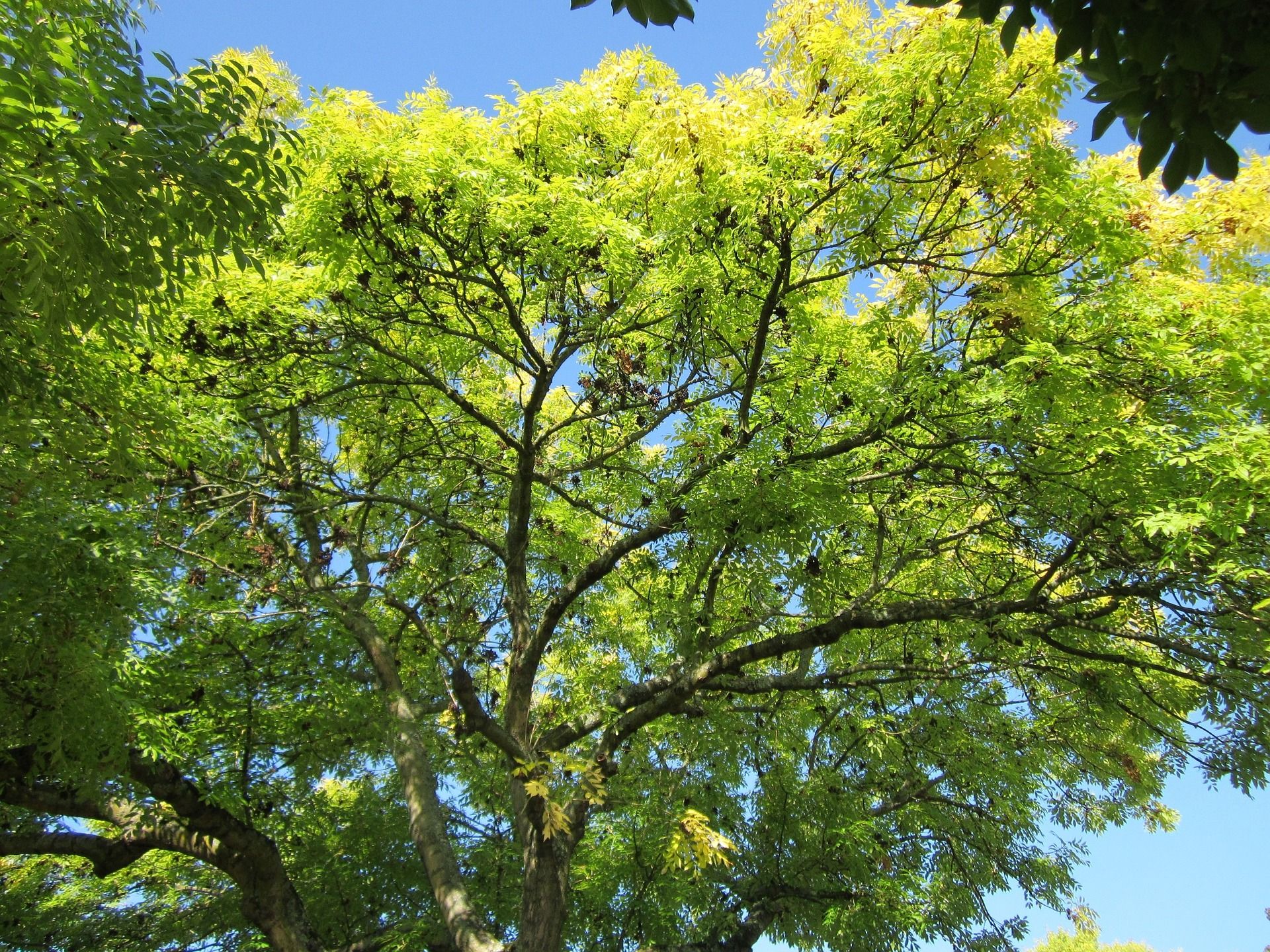Ash is one of our most beautiful native trees. It grows throughout Scotland, although it is not usually found at high elevations and does not grow well in acidic soils. Ash is a large deciduous tree which can grow up to 35m and live up to 400 years old. It is easily identifiable, either by its compound leaves composed of opposing leaflets or in winter by its large distinctive black buds.955 species of birds, mammals, insects, fungi, mosses and lichens use ash. 65 of these are highly dependent on ash and 45 are only found on ash. This shows the biodiversity associated with native trees.
Ash is a particularly important tree for lichen and bryophytes. In the UK over 500 different lichens have been recorded growing on ash. Its leaves provide food for a number of different species of moth caterpillars. Bullfinches feed on the ash’s keys (seeds) and many birds, including barn owls and redstarts, nest in ash branches. Ash wood is very strong and durable and it has long been used as a source of timber. Historically it was used to make chariot and coach axles. Today ash is still used for making a wide range of products such as hockey sticks, various tools and furniture. Ash wood also provides a good source of fuel, the tree’s Latin name Fraxinus, means firelight, and the density of the wood means that it burns for a long time and produces a significant amount of heat. Ash also has a firmly established place in British folklore, having been long associated with protection and healing. The ash tree also held an important role in Viking mythology.
Action Needed
- Promote the benefits of UK sourced and grown trees in order to improve biosecurity of planting stock and support the nursery sector.
- Support increased tree resilience from pests and diseases by supporting increased native tree planting and native woodland creation as part of Scottish Government’s target of 18,000 ha of new woodland creation by 2025.
- Ensure local authorities are resourced to manage ash dieback effectively and replace lost trees with the appropriate species.
- Ensure findings from the Scottish Plant Health Centre https://www.planthealthcentre.scot/on ash resilience and ecology are used to inform public policy.
Threats
- In recent years ash has been gravely threatened by a fungal disease known as Chalara Ash dieback. The disease was first found in the UK in 2012, it is believed to have come to the UK with saplings brought over from the Netherlands. Since then the disease has gradually spread across the UK. A number of cases have recently been confirmed in Edinburgh for the first time. Disease is spread by wind and is usually fatal to infected trees. Some scientists have suggested that 80% of the UK ash population could be lost . However, some resilient trees have been found in England and research is being done into the genetic markers of more resilient trees.
- Scottish Forestry provides an ash dieback management framework for local authorities to ensure they are prepared to deal with ash dieback effectively and safely by sensitive removal of diseased trees and ensuring that the lost trees are replaced with the right species.
MSP Nature Champion

Graham Simpson
Member for: Central Scotland
Region: Central Scotland
Party: Scottish Conservative & Unionist Party


